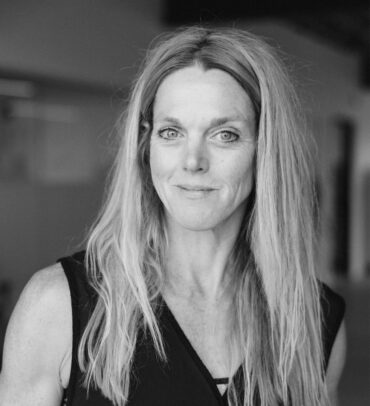Dr Stacy Sims: Why women must eat before exercise
Unfiltered met with leading exercise physiologist and women’s health expert Dr Stacy Sims to discover her science-backed advice and insight on how women can better train, eat, recover and life to perform at their best.
This transcript has been taken from our video interview with Dr Stacy Sims. It has been edited for clarity and brevity. You can watch the full video interview here.
According to your work there’s a huge difference in the physiological response in women when doing cardio fed versus fasted. What are these differences and why do they exist?
Absolutely. So it comes down to the hypothalamus. In the hypothalamus there’s an area of neurons called kisspeptin, and this is a central group of neurons that’s responsible for puberty development. So we’re looking at the endocrine system, thyroid, muscle development. In women, there are two areas of kisspeptin neurons, but in men there’s only one.
Women have two areas because women have a menstrual cycle and a very robust endocrine system that changes over the course of a month.
When we’re looking at thresholds for calorie intake, we’re looking at nutrient density, the thresholds are completely different. So we see that when women start to drop their calories below 35 calories per kilogram of fat-free mass, the kisspeptin neurons are down-regulated. So we start to see a down-regulation of thyroid within three to four days.
For men, that threshold that they start to see a little bit of endocrine dysfunction, a little bit of lower testosterone, is 15 calories per kilogram of fat-free mass, so it’s a massive threshold difference.
What are the implications for women when they train in a fasted state?
When we start talking about fasted training, women are already maximally capable of burning fatty acids from sex differences in the muscle cell, and also estrogen exposure encourages fatty acid utilisation.
So for women the idea of fasted training and the whole metabolic efficiency thing doesn’t hold water.
And when we start looking at women going into fasted training, especially in the morning when there’s a higher elevation of cortisol already, and then they start trying to do either lifting or heavy cardio intensity, you’re not going to be able to hit those intensities without over-stressing the body.
And the body is in this catabolic state and when you’re in that catabolic state, the brain perceives it as, “Oh, there’s not enough calories. I have to start really conserving.”
For men, it’s not the same because of that lower calorie-intake threshold, and we know from a biological perspective that in times of low calories, men would lean up and get thinner and stronger to go fight the beast to fight to bring the calories home.
But women would get fatter and their menstrual cycle would stop because they needed to store calories and they couldn’t reproduce, because why would you reproduce when there aren’t enough calories around to feed who was already there?
How much food should a woman eat before exercise?
It’s not a lot of food! When we talk about a fed state people think, “Oh, I have to get up and have a full breakfast before I go to train.” That’s not the case.
If you’re going to do weight training, you need around 15g of protein. That’s enough to get amino acids circulating to signal to the hypothalamus that there’s some nutrition coming in. And then post-strength training, have your breakfast. Have a good dose of protein as well as carbohydrates.
If you’re doing cardiovascular-type training then you want to have 30g of carbohydrates with that 15g of protein, so again not a lot. Fewer than 200 calories total.
I often opt for protein-fortified cold brew coffee with some sweetened oat or almond milk. Some carbs, protein and caffeine and I am good to go and then I have breakfast afterwards.
People need to understand training in a fed state doesn’t mean needing to have a full meal, but it does mean having some nutrition coming in first.
That means the hypothalamus understands that I’m not going to be doing this kind of stress without any kind of nutrition. It also feeds forward to better EPOC [excessive post-exercise oxygen consumption], so your metabolism stays elevated and there’s better signalling for adaptations, so you get better adaptive response to your training.
Is there ever a case for a woman to train in a fasted state, such as for rapid weight loss?
No, women should always be training in a fed state. If you’re trying to lose excess body fat, there are two things women should really focus on.
We know that increasing protein intake without exercise can recomposition the body over the course of three months. This is hitting a daily protein intake target of about 1g per pound, or 2g per kilo of lean body weight. That will facilitate body fat loss.
The other thing is that a slight calorie reduction in the afternoon away from training or even a smaller dinner, and no snack after dinner, really goes far. Why? Because you’re working with your chronobiology and you’re working to give your body the fuel that it needs in the day to work with your circadian rhythm and how your body best responds to food. And it’s also giving your body the opportunity to really utilise existing body fat stores.





